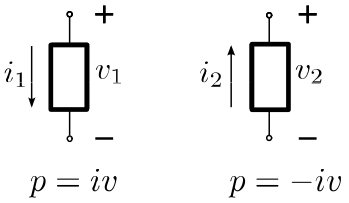Formulae, constants, laws, etc.
- Coulomb = C
- Electrons per coulomb: \( 6.241509745 * 10^{18} \)
- Coulombs per electron: \( 1.602 x 10^{-19} \)
- Coulomb’s Law:
| \[ \left | F \right | = k_{e}\frac{q_{1}q_{2}}{r^{2}} \] |
- … where
- \( k_{e} \) is a constant
- \( q_{1} \) is the charge of the first particle in Coulombs
- \( q_{2} \) is the charge of the second particle in Coulombs
- r is the distance between them in meters
- F is the force in newtons
- m is meters
- N is Newtons
- \( k_{e}=8.988 \ast 10^{9} \frac{Nm^2}{C^2} \)
- Meter: Abbreviated m.
- Centimeter: Abbreviated cm.
- Newton: Unit of force. Force needed to accelerate 1 kilogram of mass at the rate of 1 meter per second squared. Abbreviated N.
- Amp: Unit of current. Abbreviated A.
- Amps = Coulombs / seconds
- \( A=\frac{C}{s}\)
- Joule: Unit of work (or energy expended). Abbreviated J. Newtons * meters.
- 1 Joule = passing an electric current of one amp through a resistance of one ohm for one second
- Other measures of work/energy expended:
- Watts * seconds
- Coulombs * volts
- Volts are joules divided by coulombs. i.e. 1V = \( \frac{1J}{1C} \)
- Watts:
- Joules per second
- Volts * Amps
- Current arrows
Forward (positive):

From plus, through to minus is forward (consuming power).
Reverse (negative):

From minus, through to plus is backward (generating power).
For voltages, + connected to + is forward.
Another way of diagramming the same thing

- Ohm’s Law:
- v = iR
- If current arrow is from minus, through to plus, then use v = -iR
- \( \Omega=\frac{V}{A} \)
- Volts / Amps
- v = iR
- Metric prefixes
- k = kilo = \( 10^{3} \)
- M = mega = \( 10^{6} \)
- c = centi = \( 10^{-2} \)
- m = milli = \( 10^{-3} \)
- \( \mu \) = micro = \( 10^{-6} \)
- Kirchhoff’s Current Law: The sum of all currents entering a node = the sum of all currents leaving a node.
- Resistors in series: \( R_{1} + R_{2} + R_{3} \)
-
Resistors in parallel: \( \left ( \frac{1}{R_{1}} + \frac{1}{R_{2}} + \frac{1}{R_{3}} \right )^{-1} \) or use \( \frac{R_1 R_2}{R_1 + R_2} \)
-
Voltage divider (using resistors in series): \( v_1=\frac{R_1}{R_1+R_2}v \)
-
Current divider (using resistors in parallel): \( i_1=\frac{R_2}{R_1+R_2}i \)
- Capacitance in Farads:
\[ C = \frac{Q}{V} \]
- C = Farads
- Q = Coulombs
- V = Volts
- 1 microfarad = 1 \( \mu \)F \( = 1 \times 10^{-6} \) farad
- 1 picofarad = 1 pF = \( 1 \times 10^{-12} \) farad = 1 micro microfarad